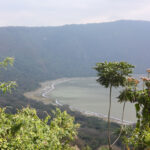
When is the high season?
The high season in Tanzania runs from July to March with a short rainy break in November. However, in the wildlife parks to the south and west of Tanzania the high seasons runs from June to October.
During the high season accommodation prices can be higher. Our goal is to plan for and provide guests with intimate experiences, but bear in mind that this will be the peak travel period to Tanzania’s most famous game parks. If you are looking for a more secluded safari, one of our country experts can help you choose less visited parks to the south or west of Tanzania. Or, if you are on a budget, you could consider one of our intimate group tours, which provides you with the same amazing experience at a reduced cost.
When is the low season?
The low season, brought about by the long rains, occurs in Tanzania from April to May. With the abundance of available grass, the wildlife becomes harder to see as it moves further away from its dry-season water sources. However, the green vibrant landscape with a wealth of migratory birds certainly makes up for this.
Camps to the north tend to remain open. However, some of the accommodations in southern Tanzania can close during this period. The Zanzibar archipelago can receive large amounts of heavy rain, which makes a dream beach holiday less advisable in these months.
Prices are lower during this period and if you are open to suggestions from one our country experts, we could help you plan a unique experience in Tanzania during the low season.
When is the dry season?
The dry season in Tanzania occurs from June to October and it is the best time to visit Tanzania.
Inland, and depending on where you would like to visit, you can expect to experience dry day-time temperatures ranging from 20°C/68°F to 30°C/86°F. Surprisingly, temperatures can fall rapidly at night, so don’t forget to pack warm clothes for when you partake in an early morning game drive. If at altitude, such as the rim of Ngorongoro crater or Mount Kilimanjaro, temperatures will be much lower. In general, there is very little rain, low levels of humidity, and beautiful blue skies during this season.
The Tanzania coastline and the Zanzibar archipelago has a tropical climate. The best time to visit Zanzibar is also during the dry season, due to low humidity, warm weather, and low chance of rain. The dry season has the perfect weather for your post-safari beach destination.
When is the rainy season?
Tanzania experiences two rainy seasons, the short and the long rains. Both influence the best time to visit Tanzania, however, the long rains will have the greatest impact on a safari, trek, climb, or beach holiday to Tanzania.
The short rains last from November to December. Often unpredictable, it creates a flush of green growth and it is a beautiful time to visit Tanzania. Returning migratory birds are another highlight.
January to February experiences a break from the rain and it happens to coincide with the start to the wildebeest calving season in the Serengeti National Park. Low-season prices are on offer in some of the southern parks, making this period one of the best times to visit Tanzania.
The long rains occur from March to May thanks to the southeast trade winds carrying huge amounts of rain inland. Often coming in bursts, heavy rain can be expected nearly every day.





